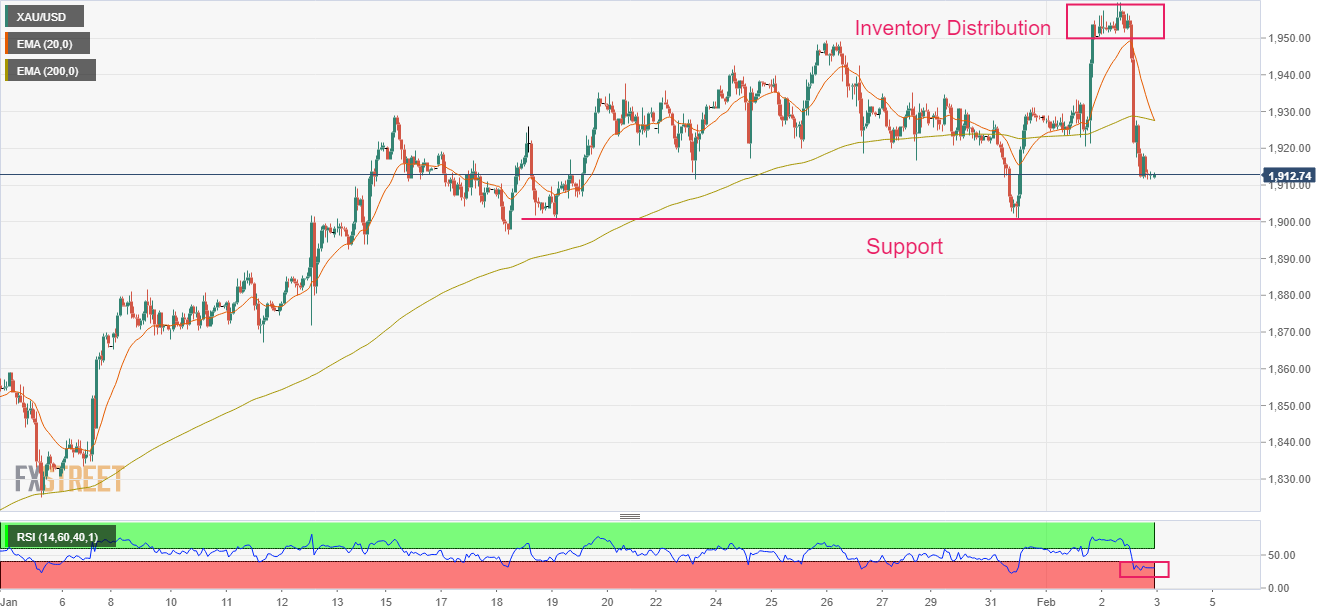- Gold price is eyeing more weakness to near $1,900.00 after an inventory distribution breakdown.
- Higher US labor cost data could shrug off Fed’s policy tightening pause rumors ahead.
- S&P500 has displayed a three-day winning streak despite further policy tightening by the Fed.
Gold price (XAU/USD) nosedived to near $1,912.00 after a blockbuster recovery move from the US Dollar Index (DXY) on Thursday. The precious metal is staring at the round-level resistance of $1,900.00 as further downside looks possible ahead of the United States Nonfarm Payrolls (NFP) data.
The downside pressure in the USD Index led by rising expectations that the Federal Reserve (Fed) might consider a pause in the policy tightening as the US inflation is softening significantly has been shrugged off. The US labor cost index is still solid and carries the ability to dismantle the Fed policy pause context.
In the US NFP gamut, Analysts at TD Securities expect a 220K increase in payroll and a modest increase in the Unemployment Rate to 3.6%. As per the consensus, Average Hourly Earnings data is seen at 4.9% vs. the prior release of 4.6% on an annual basis. While monthly data is seen steady at 0.3%. Led by exceeding labor demand against the supply, higher negotiation power in favor of job seekers could dent the price index declining trend, which can shrug off the rumors calling for a pause in the policy tightening pace by the Fed.
Meanwhile, risk-perceived assets like S&P500 have displayed a three-day winning streak despite further policy tightening by the Fed.
Gold technical analysis
Gold price has demonstrated a perpendicular sell-off after an Inventory Distribution chart formation on an hourly scale. The inventory distribution in a minor range of $1,950-1,960 indicates a shift of inventory from institutional investors to retail participants. The 20-and 200-period Exponential Moving Averages (EMAs) have delivered a bear cross at $1,927.80, which indicates more weakness ahead.
In addition to that, the Relative Strength Index (RSI) (14) has shifted into the bearish range of 20.00-40.00, which indicates that the downside momentum has been triggered.
